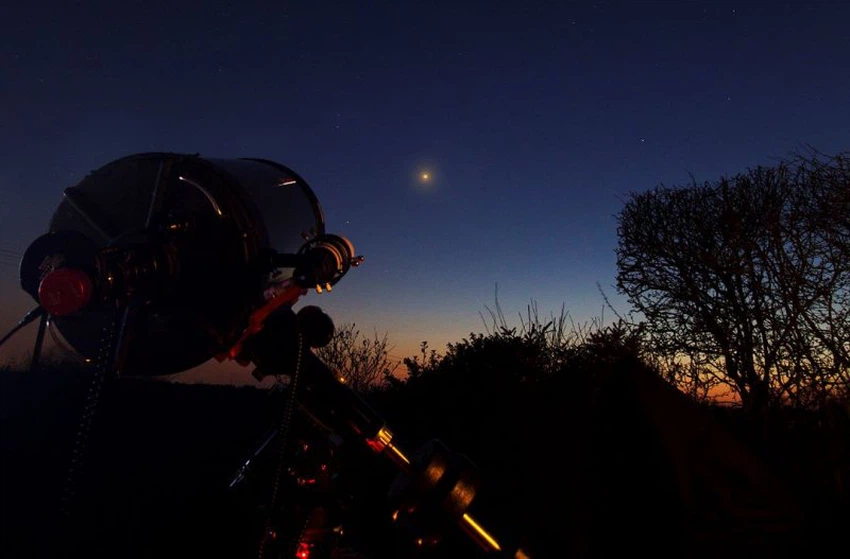Mars in `perihelion opposition` this week
Arab Weather - Dr. Ammar Al-Sakaji, head of the Jordanian Astronomical Society, said that Mars will reach the point of opposition with the sun next Thursday, January 16, at 4:54 am Jordan time, and will be in the constellation "Gemini", and the distance between Mars and Earth is about 96.3 million kilometers. Mars reached the perihelion point, which is as close as possible to Earth, last Sunday, January 12, at 4:32 pm, and the distance was approximately 96.1 million kilometers. Mars is not necessarily at its brightest when it is at its closest point to Earth, but it is brighter when it is in opposition to the sun due to the "opposition surge" phenomenon, and the brightness increases when the two phenomena (opposition and perihelion) come together.
The coincidence of the phenomena of opposition and perihelion is considered a rare astronomical event, despite the time difference in days between them. Opposition is an astronomical phenomenon that occurs when two celestial bodies are on the side opposite each other, apparently, when observed from Earth. This is what will happen to Mars: it will meet the sun and be on the side opposite the sun, as seen from Earth next Thursday.
Mars and the Sun are in opposition approximately every 26 months, and this is generally not considered a rare astronomical event. However, the occurrence of "perihelion opposition", that is, the opposition coincides with the perihelion period, is a rare astronomical event, and Mars is closest to Earth, and it occurs approximately every 15-17 years, as will happen during this week. The record numbers for Mars' closest approach to Earth were in 2003 and the next one is in 2287, and the distance is approximately 56 million kilometers.

Astronomy and photography enthusiasts can watch Mars immediately after sunset, as Mars rises from the east simultaneously with sunset, then begins to rise in the sky and reaches its highest altitude at 12:51 after midnight (Wednesday/Thursday night) and its height in the sky is about 83 degrees as seen from Jordan on the southeastern horizon. This is one of the best times to watch, observe and photograph it, and its brightness is greater than usual, as its magnitude is negative and reaches "-1.4" and remains so throughout the night and for days or more, and its surface is fully illuminated by the sun, and it is brighter. This is the best time to watch Mars with the naked eye and photograph it with cameras, and medium-sized telescopes can see some dark details on the surface of this planet.
This week another astronomical phenomenon begins: the Planetary Parade, where a group of six planets will appear beautifully on one side of the sun at the same time, moving westward along the zodiac so that they can be seen after 7:30 p.m. every day, starting in mid-January for about four weeks. The zodiac is the apparent path of the sun in the sky.
Four of these planets can be seen with the naked eye: Mars, Jupiter, Venus, and Saturn. While we need optical instruments (telescopes or binoculars) to see Uranus and Neptune, this is in the case of the availability of the standard astronomical conditions for observation, which are clear skies and the absence of clouds, dust, and light pollution.
It is worth mentioning that the wonderful terrain and shape of Wadi Rum is considered the closest to the terrain and shape of Mars or the Red Planet, and this is considered an attraction for local and international tourism. Many films have been produced in Wadi Rum due to the similarity of the terrain to Mars. Wadi Rum is considered a destination for many directors and cinematographers.
Arabia Weather App
Download the app to receive weather notifications and more..



